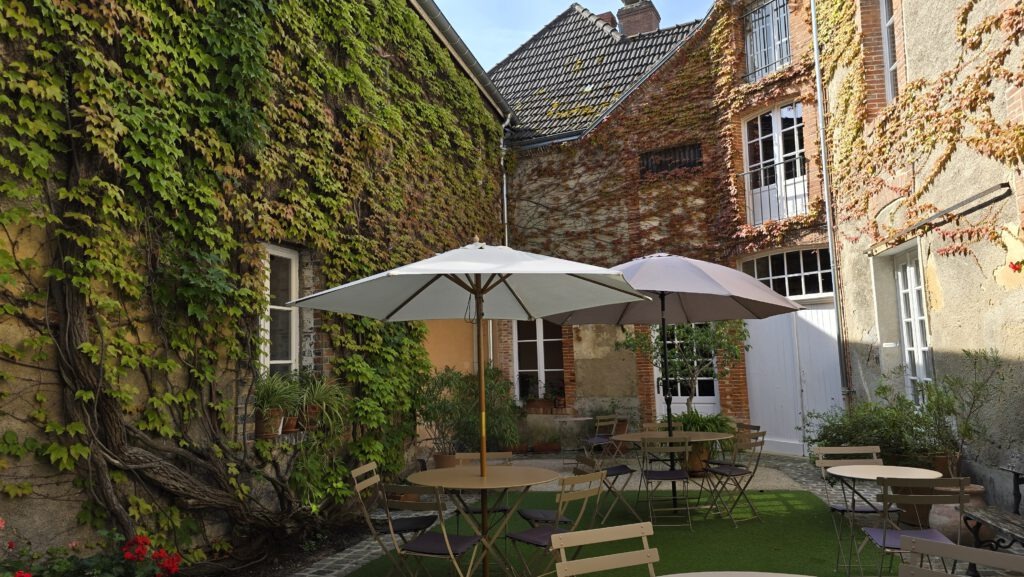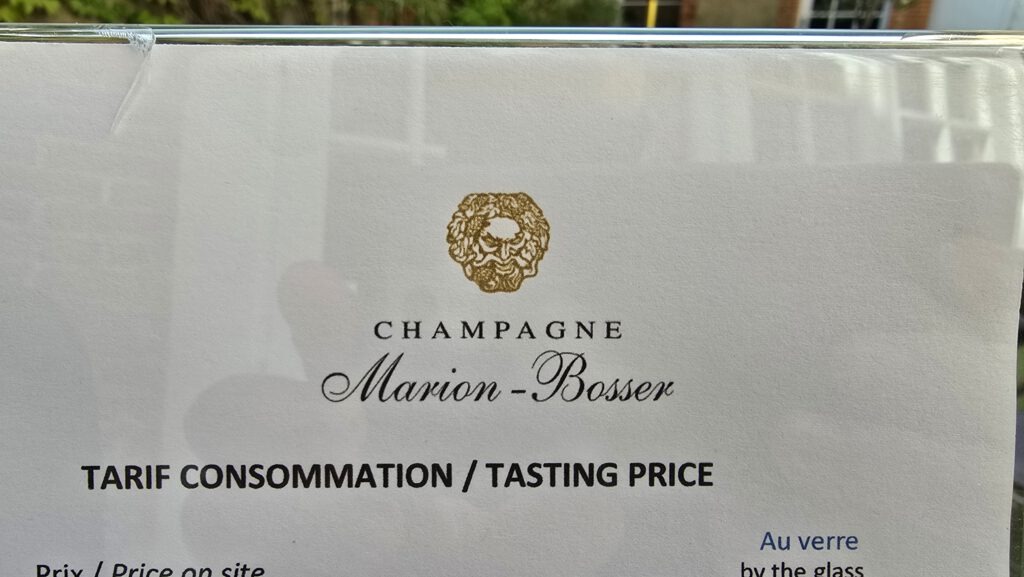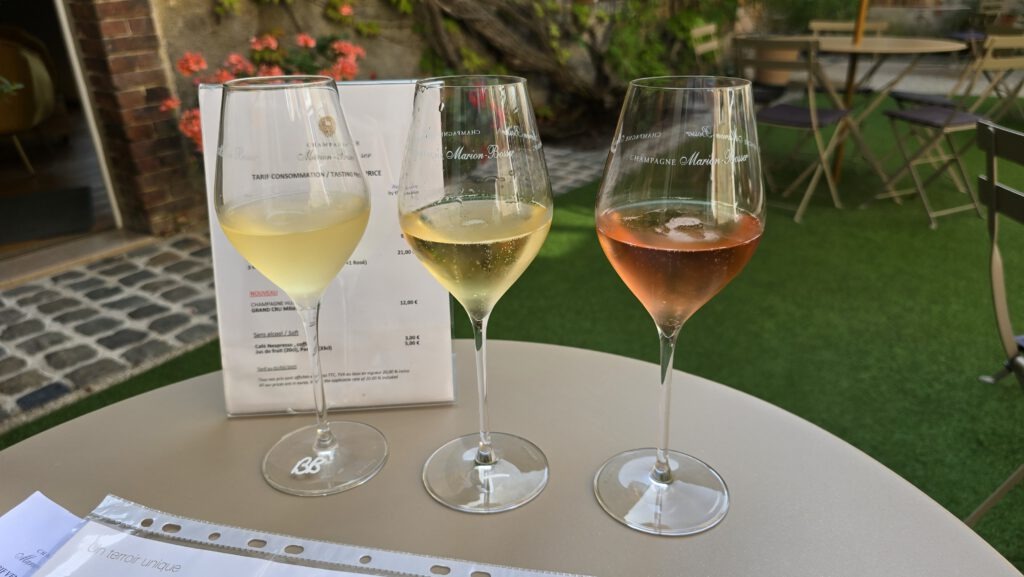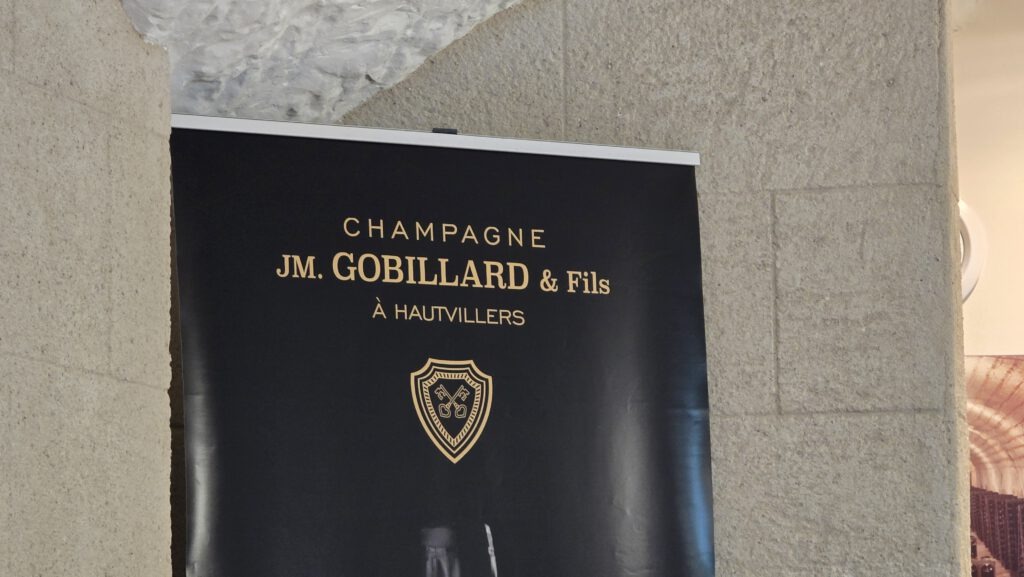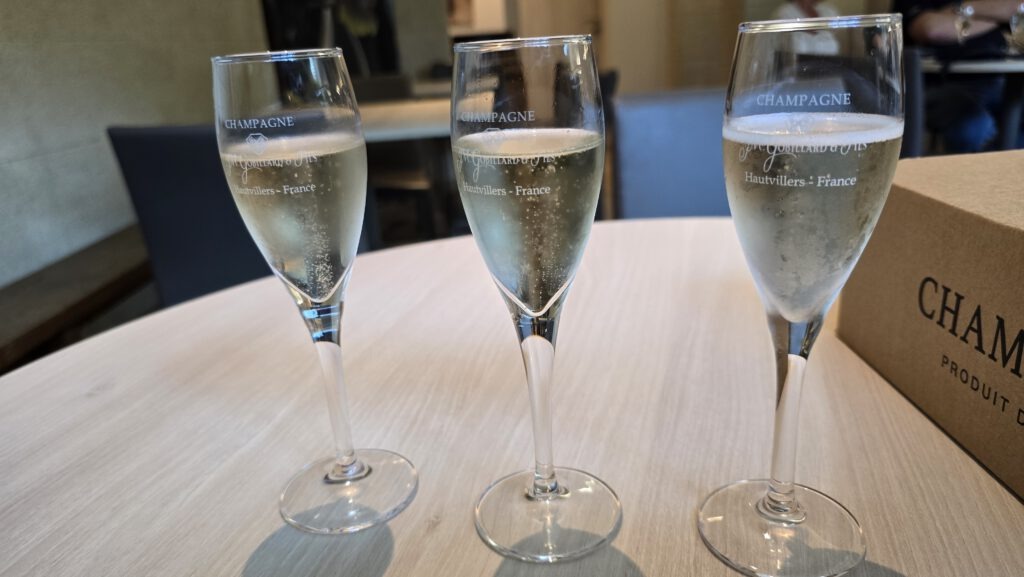My first experience in Hautvillers Champagne
I always wanted to experience Champagne from the inside. Not only as a sommelier serving or describing the wine, but truly there where it all begins. When I finally got the chance to visit the Champagne region, I grabbed it with both hands. And honestly: what better place could I have chosen for my first time than Hautvillers Champagne Premier Cru?
This small village, hidden among the rolling hills, is seen worldwide as the birthplace of Champagne. It was here that Dom Pérignon did his legendary work and laid the foundation for what today is the most iconic sparkling wine in the world. With that thought in mind, I began my adventure in Hautvillers Champagne, and I can tell you, it became an experience I will never forget.
A village full of history and atmosphere
Hautvillers is the kind of village that embraces you right away. It sits high on a hill, with a panoramic view over the vineyards stretching like a green patchwork across the valley. As soon as you walk through the streets, you see picturesque houses with wrought-iron signs that take you back in time. It feels as if history here does not only exist in books, but is present in every stone, every façade, and every little street.
The name of Hautvillers is inseparably linked with Dom Pérignon, the Benedictine monk who devoted his life’s work to wine at the Abbey of Saint-Pierre. His experiments and insights ensured that Champagne developed into the wine we know today. The monastery can still be visited and contributes to the mythical status of the village.
It is no coincidence that Hautvillers is part of the UNESCO World Heritage “Champagne Hillsides, Houses and Cellars”. This recognition confirms that Hautvillers is not only a place of wine production, but also a cultural monument where tradition, history, and craftsmanship come together.
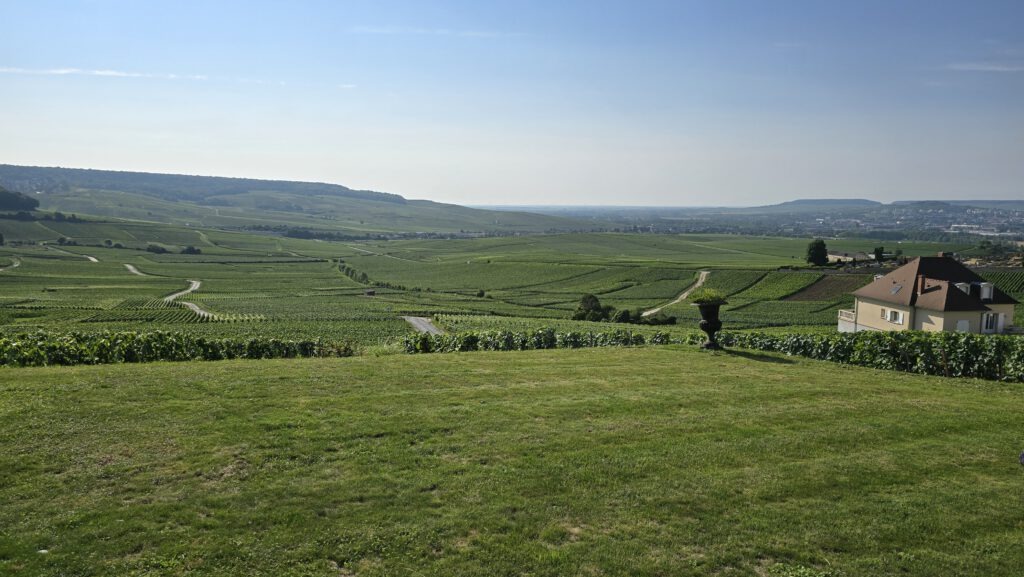
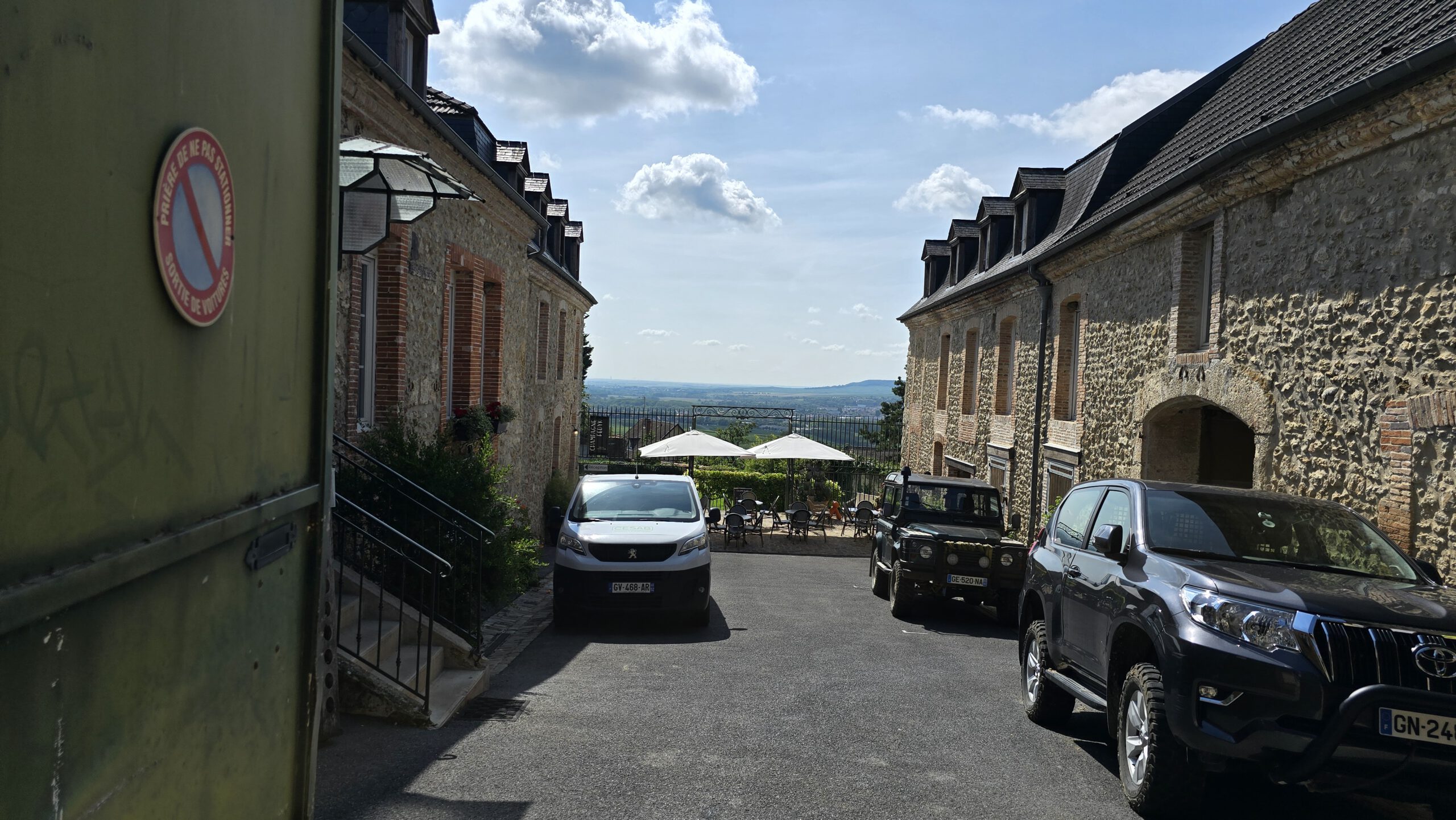
Tasting Champagne in Hautvillers
Drinking Champagne in Hautvillers feels almost natural, as if the village invites you to start every day with a glass of bubbles. And believe me, it may sound decadent, but a glass of champagne at breakfast in such an environment does not feel like excess, but like pure art of living. It is a memory you take with you: sunlight playing on the vinyards, a sparkling glass in your hand, and the thought that you are experiencing this in the place where it all began.
What makes Hautvillers so special is that you can still find family houses where champagne is made with heart and soul. Visiting a champagne house here means more than just tasting. It is an encounter with tradition, craftsmanship, and the pride of generations of winemakers. You quickly notice that these family houses offer a different experience than the big brands: more intimate, more personal, and often surprisingly affordable.
For me this was the essence of Hautvillers: not just the wine in the glass, but the stories, the warmth, and the authenticity that lie behind every bottle.
My tastings at three houses
Champagne G. Tribaut
My first stop was at Champagne G. Tribaut, where the location alone was a celebration. From the tasting room I looked out over a gently rolling valley full of vineyards, bathed in the morning light. It was almost too good to be true.
I tasted their Cuvée de Réserve Brut, Blanc de Noirs Premier Cru, Blanc de Blancs Brut, and even their Ratafia. The Réserve Brut, a blend of Pinot Noir, Pinot Meunier, and Chardonnay, was one of the most balanced champagnes I had ever drunk. Elegant, lively, and rich in aromas of pear, mirabelle, and raspberry, rounded off with subtle notes of gingerbread and passion fruit. The Blanc de Noirs, made from pure Pinot Noir, surprised me with its combination of ripe red fruit, citrus, and a hint of toast. The Blanc de Blancs, on the other hand, brought purity and freshness, with notes of lemon, apple, and white flowers. And the Ratafia? A smooth aperitif wine full of red fruit and nutty elegance, which I will certainly write more about later.
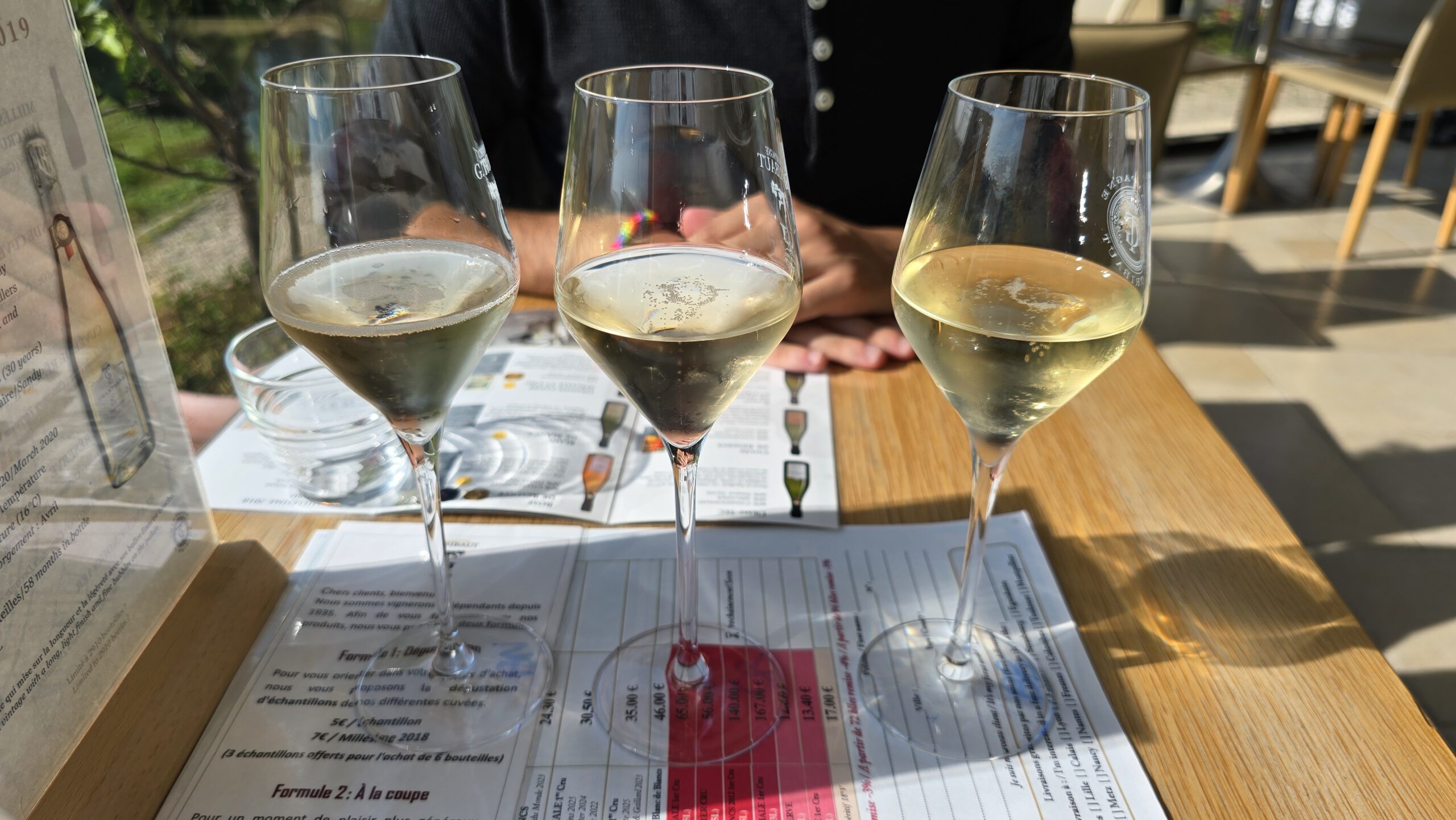
Champagne Marion-Bosser
Then I stepped inside at Champagne Marion-Bosser, a charming estate with a classic French courtyard. Here I tasted their Brut Tradition Premier Cru, Extra-Brut Blanc de Blancs, and Brut Rosé.
The Brut Tradition, a blend of Pinot Noir and Chardonnay, combined fresh citrus fruit with a round and fruity mouthfeel. The Extra-Brut Blanc de Blancs radiated finesse, with delicate citrus and white flowers on the nose and an elegant, almost buttery texture on the palate. But the biggest surprise was the Rosé Premier Cru. I had always had my doubts about the style of blended rosé that is unique to Champagne, but this glass convinced me completely. Fresh red fruit, elegance, and refinement made this one of the finest rosés I had ever tasted.
Jean-Marie Gobillard & Fils
My last tasting was at Jean-Marie Gobillard & Fils. Their caveau, close to Marion-Bosser, feels like a monastic vault, fitting for a village so closely tied to monastic traditions. It gave the tasting an almost sacred atmosphere.
Here I tasted their Brut Tradition, Blanc de Blancs, and Grande Réserve Premier Cru. The Brut Tradition was smooth and refined, with aromas of stewed pear and ripe red fruit. The Blanc de Blancs sparkled with freshness and floral notes, and the Grande Réserve Premier Cru excelled in power and roundness, full of ripe stone fruit and a silky finish.
Three houses, three styles, but one common thread: authenticity and respect for the terroir. Each glass told a story of craftsmanship and generations of passion.
FAQ
-
Why is Hautvillers called the birthplace of Champagne?
Because Dom Pérignon did his groundbreaking work in the abbey of Hautvillers and thus laid the foundation for the Champagne we know today.
-
What does Premier Cru mean in Hautvillers Champagne Premier Cru?
Premier Cru refers to the high classification of the vineyards in Hautvillers within the traditional cru system of the Champagne region.
-
Can you visit champagne houses in Hautvillers without an appointment?
Many family houses welcome visitors, but it is advisable to book in advance to be sure of a place for a tasting.
-
What is the difference between Blanc de Noirs and Blanc de Blancs Champagne?
Blanc de Noirs is made from black grapes (Pinot Noir and Pinot Meunier), while Blanc de Blancs is made exclusively from Chardonnay. They therefore each have their own character and taste.
-
Is champagne in Hautvillers cheaper than with the big brands?
Yes, often champagnes at the family houses in Hautvillers are more attractively priced and offer excellent value for money compared to the big brands.

